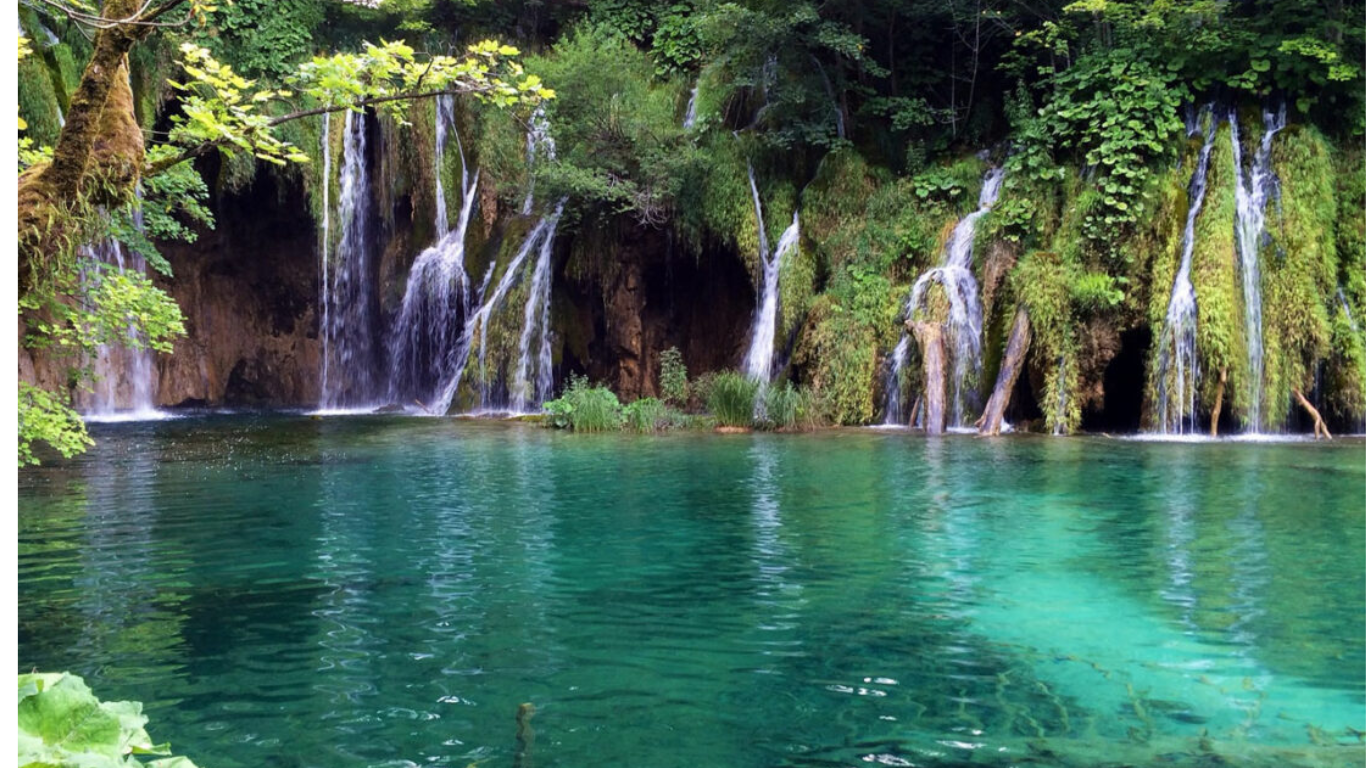Eco-tourism is a rapidly growing travel trend that appeals to those who wish to explore and enjoy nature without causing harm to it. By promoting responsible travel practices, eco-tourism helps preserve natural environments, supports conservation efforts, and fosters a deeper connection with nature. For nature lovers, eco-tourism offers the chance to experience breathtaking landscapes, unique wildlife, and local cultures while contributing to the sustainability of these regions. In this article, we will explore some of the top eco-tourism destinations that cater to environmentally conscious travelers.
Costa Rica: The Jewel of Biodiversity
Costa Rica is one of the most celebrated eco-tourism destinations in the world. With its rich biodiversity, protected national parks, and sustainable tourism practices, it attracts travelers eager to explore lush rainforests, volcanic landscapes, and pristine beaches. The country has designated over 25% of its land as protected areas, which includes 28 national parks, making it one of the most bio-diverse countries on the planet.
Key attractions for nature lovers include:
- Corcovado National Park: Located on the Osa Peninsula, this park is considered one of the most biodiverse places on Earth. It is home to rare species like the jaguar, tapir, and scarlet macaw, making it a haven for wildlife enthusiasts and birdwatchers.
- Monteverde Cloud Forest Reserve: A cloud forest ecosystem with diverse flora and fauna, this reserve offers scenic hikes and canopy tours. Visitors can spot orchids, sloths, and various species of birds, including the resplendent quetzal.
- Arenal Volcano: Known for its dramatic landscapes and geothermal activity, Arenal is a popular destination for hiking, hot springs, and wildlife viewing. The surrounding Arenal Volcano National Park is home to dense forests and rich wildlife.
New Zealand: Land of Stunning Landscapes
New Zealand is often referred to as “God’s Own Country” for its pristine natural beauty. From towering mountains and alpine lakes to temperate rainforests and coastal cliffs, New Zealand offers a wide array of eco-tourism experiences. The country is committed to conservation, and its tourism infrastructure is designed with sustainability in mind.
Some of the best eco-tourism spots in New Zealand include:
- Fiordland National Park: A UNESCO World Heritage site, Fiordland is known for its dramatic fjords, including Milford Sound and Doubtful Sound. Visitors can take eco-friendly boat tours, explore the park on foot via scenic hiking trails like the Routeburn Track, or enjoy kayaking in the crystal-clear waters.
- Rotorua: This geothermal wonderland is home to geysers, hot springs, and mud pools. Rotorua is also a center for Maori culture and offers eco-tours that explore the area’s rich natural and cultural heritage. The nearby Whakarewarewa Forest provides opportunities for cycling and hiking amidst ancient trees.
- Abel Tasman National Park: With its golden beaches, turquoise waters, and coastal rainforests, Abel Tasman is a haven for eco-tourists. Visitors can enjoy sustainable kayaking, hiking, and boat tours, all while taking in the park’s incredible scenery and diverse wildlife.
Norway: A Majestic Scandinavian Experience
Norway’s rugged landscapes, pristine fjords, and breathtaking Northern Lights make it an ideal eco-tourism destination. The country is committed to sustainable tourism practices, and many of its eco-lodges, tours, and activities are designed to have a minimal environmental impact. Norway’s commitment to sustainability is evident in its eco-friendly transportation options, including electric ferries and buses that help reduce the carbon footprint of tourism.
Highlights of eco-tourism in Norway include:
- Lofoten Islands: A remote archipelago in the Arctic Circle, the Lofoten Islands offer incredible landscapes, including dramatic mountains, deep fjords, and white-sand beaches. Eco-friendly activities here include hiking, kayaking, and wildlife viewing, where visitors may spot eagles, seals, and even whales.
- Geirangerfjord and Nærøyfjord: These UNESCO World Heritage-listed fjords are stunning examples of Norway’s natural beauty. Tourists can enjoy sustainable boat cruises and hike to panoramic viewpoints, taking in the awe-inspiring views of the fjords and surrounding mountains.
- Rondane National Park: Known for its wild, untamed beauty, Rondane offers travelers the chance to experience Norway’s mountainous terrain, abundant wildlife, and serene wilderness. The park offers hiking trails that cater to various skill levels, from beginners to experienced trekkers.
Kenya: A Safari with a Conservation Focus
Kenya is renowned for its wildlife safaris, and eco-tourism plays a significant role in preserving the country’s natural beauty and endangered species. Many eco-lodges and conservation organizations in Kenya are dedicated to promoting sustainable tourism practices that benefit both the environment and local communities.
Some top eco-tourism experiences in Kenya include:
- Amboseli National Park: Situated at the foot of Mount Kilimanjaro, Amboseli is famous for its large herds of elephants and breathtaking views of Africa’s tallest peak. Eco-tourism initiatives here focus on wildlife conservation, community development, and reducing the impact of tourism on the environment.
- Masai Mara National Reserve: This world-famous reserve is home to the annual Great Migration, where millions of wildebeest, zebras, and other herbivores cross the Mara River in search of fresh grazing. Eco-friendly safari tours here emphasize responsible wildlife viewing and support conservation projects to protect endangered species like lions and rhinos.
- Ol Pejeta Conservancy: As one of the leading conservation areas in Kenya, Ol Pejeta is home to the last two remaining northern white rhinos. Visitors can participate in guided wildlife safaris that highlight conservation efforts, including those for rhinos, elephants, and other vulnerable species.
Bhutan: The Last Shangri-La
Bhutan, nestled in the eastern Himalayas, is a country known for its commitment to environmental conservation and sustainability. The government has adopted policies that promote green tourism and limit the environmental impact of visitors. Bhutan is carbon-negative, meaning it absorbs more carbon dioxide than it emits, and it has a policy of keeping tourism numbers low to avoid over-tourism.
Key eco-tourism destinations in Bhutan include:
- Paro Taktsang (Tiger’s Nest Monastery): Perched high on a cliff, this iconic monastery is one of Bhutan’s most sacred sites. The hike to the monastery is a spiritual journey through lush forests, where visitors can witness the natural beauty of the Himalayas.
- Phobjikha Valley: A serene glacial valley, Phobjikha is home to the endangered black-necked crane. The valley is a hotspot for eco-tourism, with opportunities for bird watching, hiking, and experiencing traditional Bhutanese culture in a sustainable manner.
- Jigme Dorji National Park: Bhutan’s largest national park, Jigme Dorji, is home to diverse ecosystems, from subtropical forests to alpine meadows. The park is a haven for wildlife enthusiasts, as it is home to species such as snow leopards, red pandas, and Bhutan takins.
Tanzania: Conservation and Wildlife Sanctuaries
 Tanzania is home to some of Africa’s most iconic national parks and wildlife reserves, including Serengeti National Park, Ngorongoro Crater, and Tarangire National Park. The country is committed to sustainable tourism practices and conservation efforts that protect its incredible biodiversity.
Tanzania is home to some of Africa’s most iconic national parks and wildlife reserves, including Serengeti National Park, Ngorongoro Crater, and Tarangire National Park. The country is committed to sustainable tourism practices and conservation efforts that protect its incredible biodiversity.
Top eco-tourism highlights in Tanzania include:
- Serengeti National Park: Famous for its annual wildebeest migration, the Serengeti is one of the most iconic wildlife destinations in Africa. Eco-tourism initiatives here focus on responsible wildlife safaris, with an emphasis on minimizing environmental impact and supporting local communities.
- Selous Game Reserve: As one of the largest protected areas in Africa, Selous offers an off-the-beaten-path experience for eco-tourists. Visitors can enjoy boat safaris, walking safaris, and game drives, all while contributing to conservation efforts for endangered species like African wild dogs and black rhinos.
- Zanzibar Archipelago: Zanzibar offers pristine beaches, rich marine life, and eco-friendly diving experiences. Visitors can explore coral reefs, engage in sustainable fishing, and support local communities through responsible tourism.
Australia: Great Barrier Reef and Rainforest Adventures
Australia’s eco-tourism options are as diverse as its landscapes, from the world-renowned Great Barrier Reef to the rainforests of Queensland and the remote outback. The country places a strong emphasis on conservation and offers numerous eco-lodges and tours that adhere to sustainable practices.
Must-visit eco-tourism destinations in Australia include:
- Great Barrier Reef: The world’s largest coral reef system is a UNESCO World Heritage site and a haven for marine life. Eco-friendly dive tours and reef cruises focus on educating visitors about the importance of reef conservation and coral restoration.
- Daintree Rainforest: A UNESCO World Heritage site, the Daintree is one of the oldest rainforests in the world. Eco-tourism in this area includes guided rainforest walks, wildlife tours, and visits to Indigenous communities that have lived in harmony with the land for thousands of years.
- Tasmania: Known for its rugged wilderness and pristine national parks, Tasmania offers a range of eco-tourism experiences, including hiking in the Wilderness World Heritage Area and wildlife tours to spot native species like the Tasmanian devil.
Conclusion:
Eco-tourism offers an invaluable opportunity for nature lovers to immerse themselves in the beauty of the natural world while ensuring its preservation for future generations. By traveling responsibly, supporting conservation efforts, and choosing eco-friendly accommodations and activities, travelers can make a positive impact on the destinations they visit. From the jungles of Costa Rica to the fjords of Norway, the world is brimming with destinations where nature thrives and sustainability is at the core of the experience. more info…
